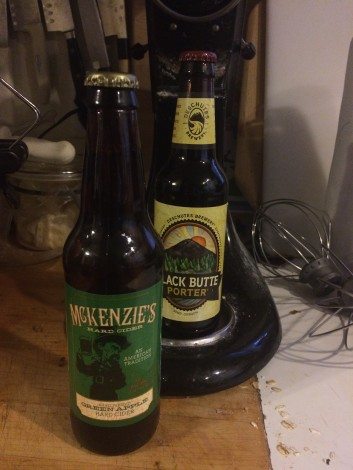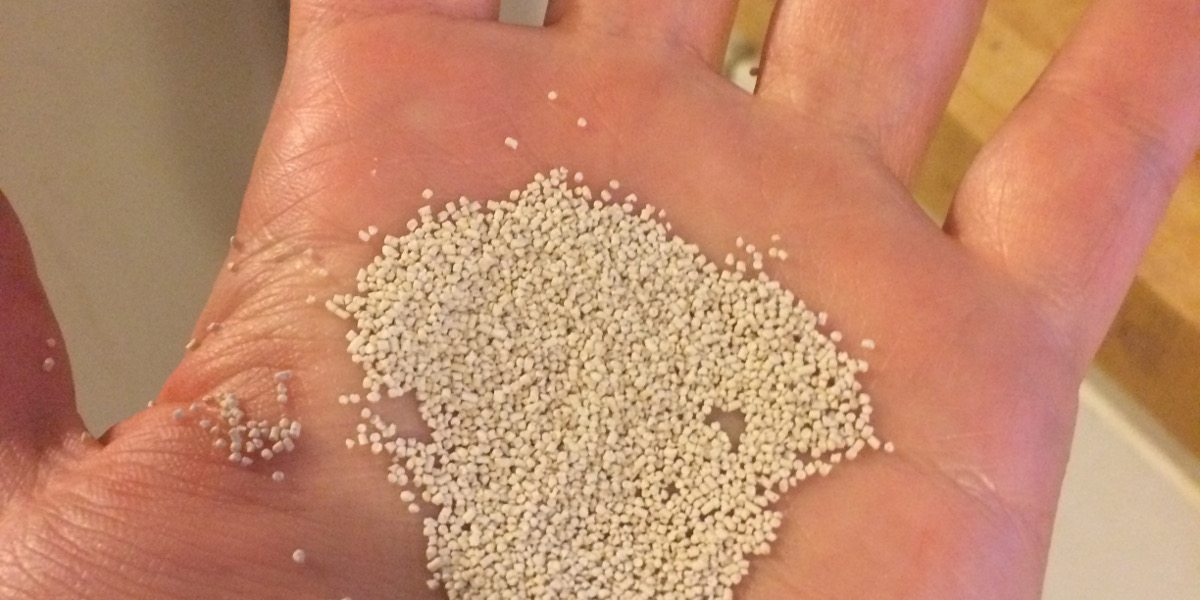“Why” is a common question in our home as I’m sure it is in yours. Right now, the kidlets still think I’m a genius because I can read more easily and faster than they can, though I know those days are rapidly coming to a close. And thank goodness for the internet and the quick Google… I think their tiny little heads would explode if they had to wait for me to look something up in a book.
One of the activities we enjoy most is baking and both kids, but Stinky 2 especially, is starting to express an interest in why things happen the way they do in the baking process. So, this is really me crib sheeting various answers before the fact. Hopefully, they’ll come in handy for you too.
Why Does Yeast Make Things Rise?
Yeast is a single celled fungus. That’s right, a fungus. For those of you who hate mushrooms but love bread, I have news for you.
Fungus.

Most of us purchase the little fungus granules, dormant from drying and cooling, in packets or nice amber bottles (direct sunlight can damage yeast). All yeast recipes use some sort of liquid to rehydrate the yeast; they often call for this fluid (usually water or milk) to be warmed because heat “wakes” the yeast up more quickly and completely, creating a faster and more effective rising reaction. This reactivation period is also why many recipes will call for you to mix at least the yeast and the fluid (and often also the sugar or honey if included) and let it sit for 5-10 minutes (takes you at last that long to wake up fully, right?)
Yeast works fine with just water and flour by breaking down the starch in the flour to simple sugars and digesting those sugars via enzymatic action. The byproducts of this process are carbon dioxide and alcohol (which is why well risen bread often smells like beer. But more about that later). I’ve noticed my breads tend to rise better and faster when I add sugar to the initial mix; I would assume this is because baking sugar is already simple and the yeast doesn’t have to put in the extra work to break down a more complex substance. There is a critical mass of sugar beyond which yeast’s enzymatic processes are actually inhibited; too much of the sweet stuff will remove a more than optimal about of water from the rehydration solution altering the osmotic pressure (the balance of water inside and outside of cells) to the extent water starts moving out of the yeast cells and into the solution; the yeast dehydrates, inhibiting its respiration and thus the production of the carbon dioxide that fills the air bubbles in the bread’s gluten matrix. Short version: thirsty yeast don’t breathe, which means there’s nothing to inflate your bread.
Provided all of your compounds are in the proper balance (which is why, with baking it’s far more important to follow the recipe exactly than it is with cooking, in which it isn’t usually that important at all), however…

Gluten is a stretchy protein that is developed when bread (at least those breads containing regular flour, either white or whole wheat) is kneaded. That is, in fact, why you need to knead bread. Some recipes even call for additional gluten (a light brown powder you can guy at most grocery stores) to ensure the proper development of the bread’s superstructure. This superstructure contains air pockets; the carbon dioxide from yeast’s respiration fills these pockets and, if the gluten is properly developed, stretches them without popping the bubble (one of the sources I looked at compared it to the process of inflating, without over inflating, a balloon). If the gluten network is weak or non-existent (as is the case when you haven’t kneaded your bread dough enough or with gluten free products), the matrix either fails to inflate fully or pops when filled, resulting in flatter, more dense products.
Heat accelerates enzymatic processes (that one is a scientific constant and one of the reasons too high of a fever – over 106, for example – an be dangerous for the human body), which is why it’s best to place your bread in a warm spot during rising. The heat from baking continues to feed the yeast’s enzymatic processes and additional carbon dioxide pumps into the air pockets. There is a point where the yeast becomes too hot and dies (remember the fungi!), at which point, no additional carbon dioxide is produced. The gluten hardens, the dough solidifies, and your bread is finished!
The thirteen year old boy who lives in my head is telling me to tell you that that bread’s delicious fluffiness is, essentially, fungus urine and burps. The thirty-seven year old woman typing this article agrees completely and just snort laughed her carbonated water. Also carbon dioxide. Doubtlessly the burping of another organism
Grown Up Variation: Beer, Cider, and Wine
The fermentation that occurs in beer is essentially the same as that which occurs in bread but without the gluten matrix to contain it. Hence the foaming and risk of explosion. The yeast is added (or “pitched”) after the wort and hops are boiled but after a cool down period – remember, temperatures above a certain point kill the yeast and, as Norther Brewer points out, No Yeast = No Beer. In the case of beer, the yeast is processing malt sugars into carbon dioxide and alcohol rather than baking sugars or flour. Keeping the fermentation chamber, and then the bottles, well sealed keeps the carbon dioxide in the product, which is what makes your beer foamy and bubble-y instead of flat and gross.

The process is similar for hard cider and wine, though the yeasts in those cases are busy devouring fructose (fruit sugars) rather than baking sugar or malt sugars.
In short, hooray for fungus.
Sources:


Yeast farts! My kids think the idea that the holes in bread are yeast farts is the most hilarious thing ever.